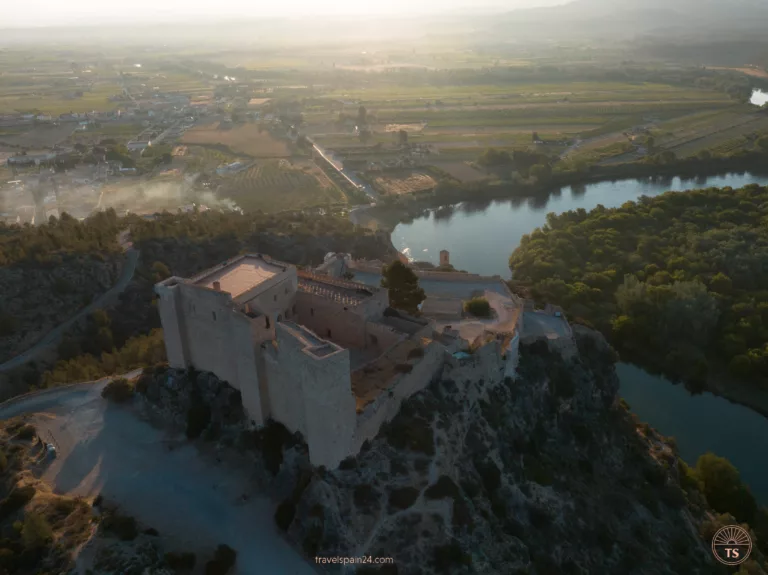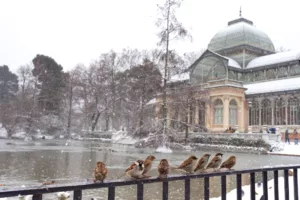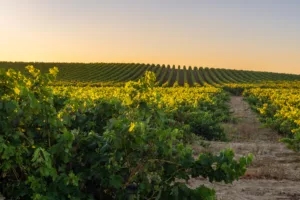How Can You Make the Most of Your Day in Arcos de la Frontera?
Arcos de la Frontera, located on a cliff in Andalusia, is one of Spain’s famous “white villages,” and also the largest one. We spent a day exploring its narrow streets, seeing the white bright houses and old landmarks.
Back in medieval times, Arcos de la Frontera was a strategic defensive spot thanks to its high position on the cliff. This made it easy to see anyone coming from miles away. Today, you can still see traces of its past, like the old castle and city walls.
Now, it’s a relaxed and friendly town. You can stroll through the streets, visit the charming old churches, and take in the amazing views over the Andalusian countryside.


Hi, we’re Timon & Filipa!
We travel across Spain and update TravelSpain24 with fresh content, practical tips, and personal stories from the road. Our goal is to help you experience Spain beyond the typical tourist trails.
How to get to Arcos de la Frontera
Arcos de la Frontera can be easily reached by road. The A-382 connects it to nearby cities like Jerez and Cadiz, making it a convenient option if you’re coming by car. Alternatively, local roads will take you right into the village if you prefer a scenic drive.
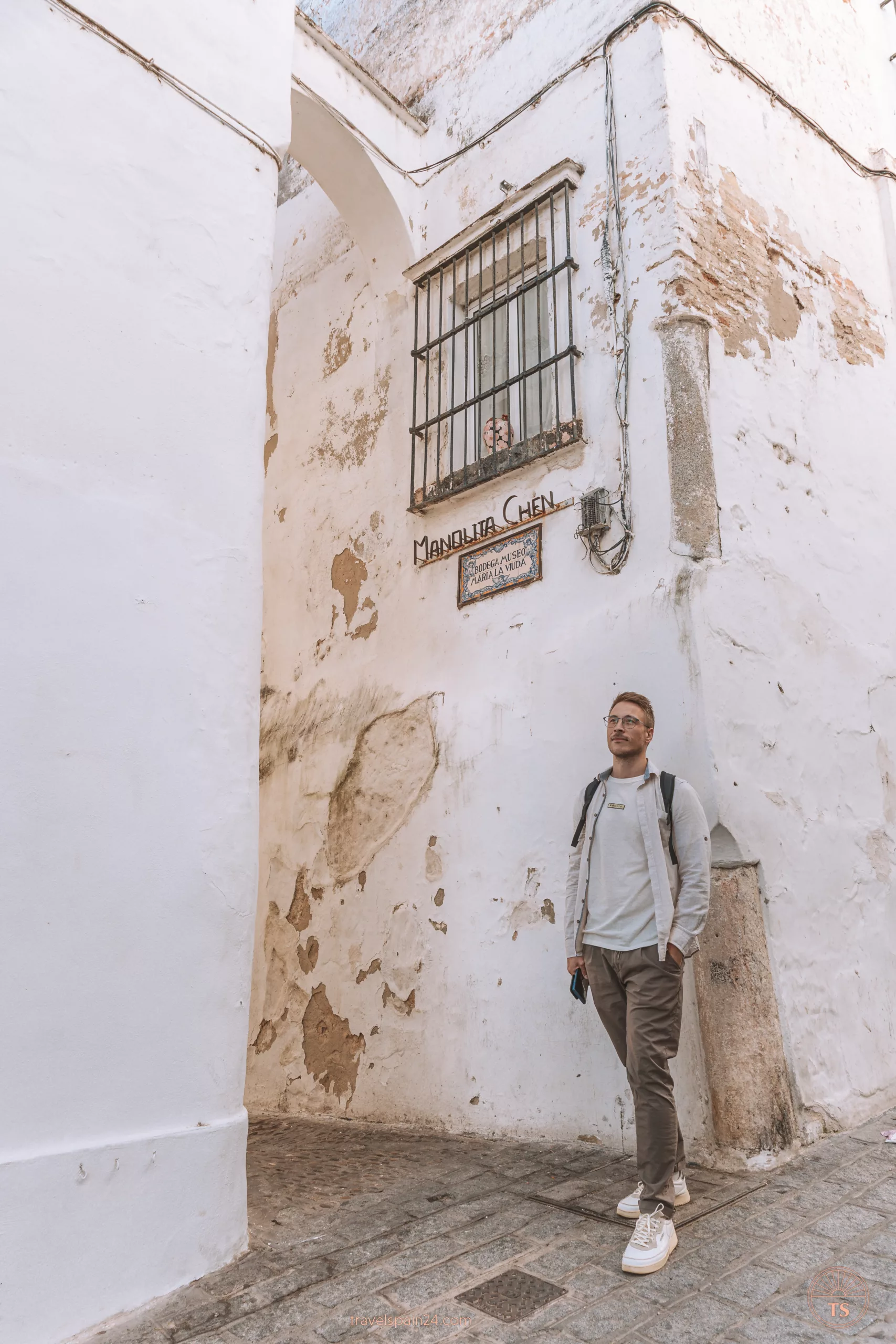
We first thought about taking a bus into town during our stay at Camping Lago de Arcos. However, we learned from the receptionist that buses aren’t very reliable here, with potential delays that could leave us waiting for over an hour.
Where to Park in Arcos
We drove our motorhome to the Área Arcos De La Frontera, just a 12-minute drive from the campsite. This spacious parking area is convenient for motorhomes, but keep in mind that it only offers parking and lacks other facilities.
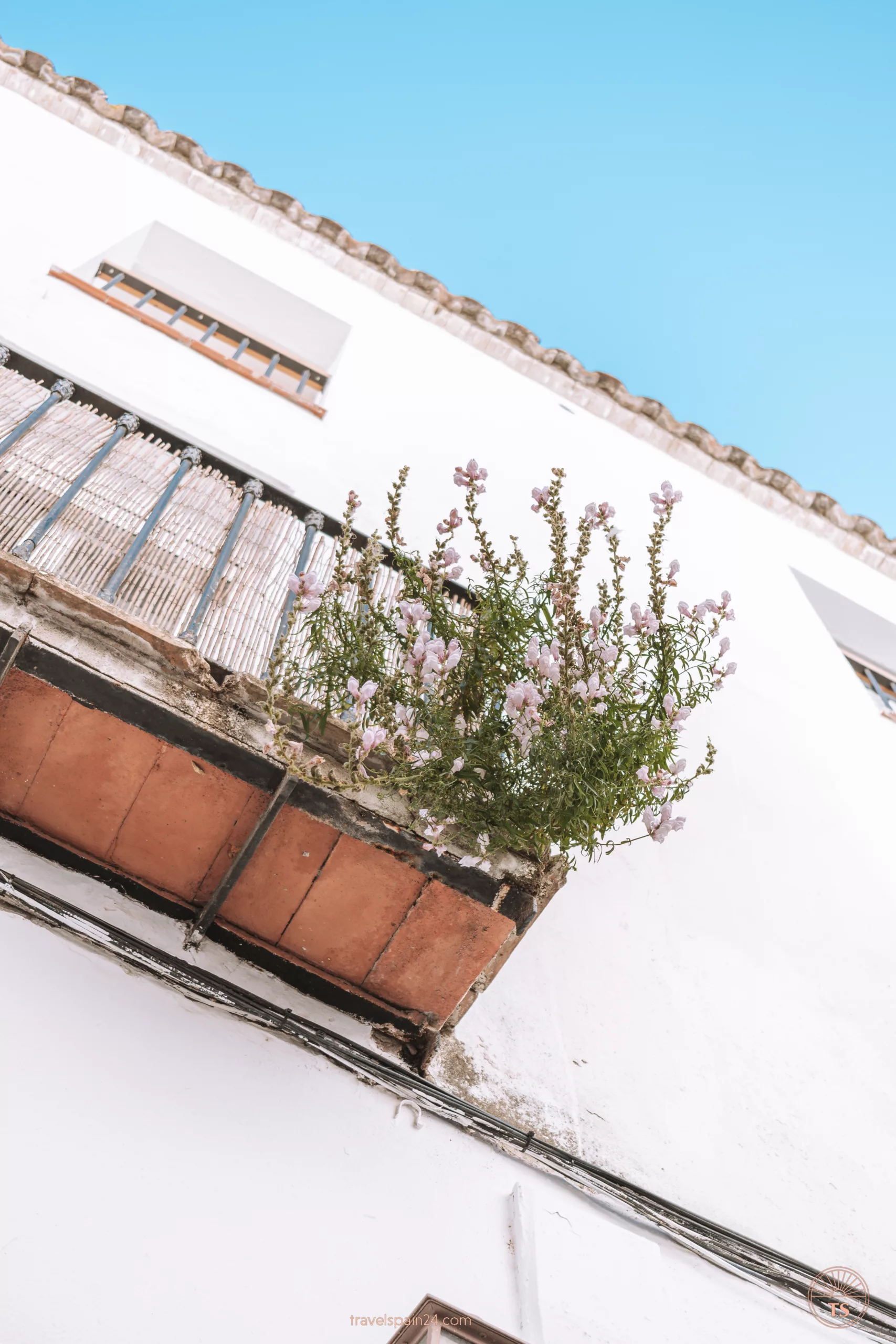
Due to the extremely narrow streets, it’s best to avoid driving through the village center. Walking is the best way to explore, while biking might seem appealing, the steep terrain can make it challenging, so it’s better to stick to walking.
Arcos de la Frontera: What to see and visit in one day
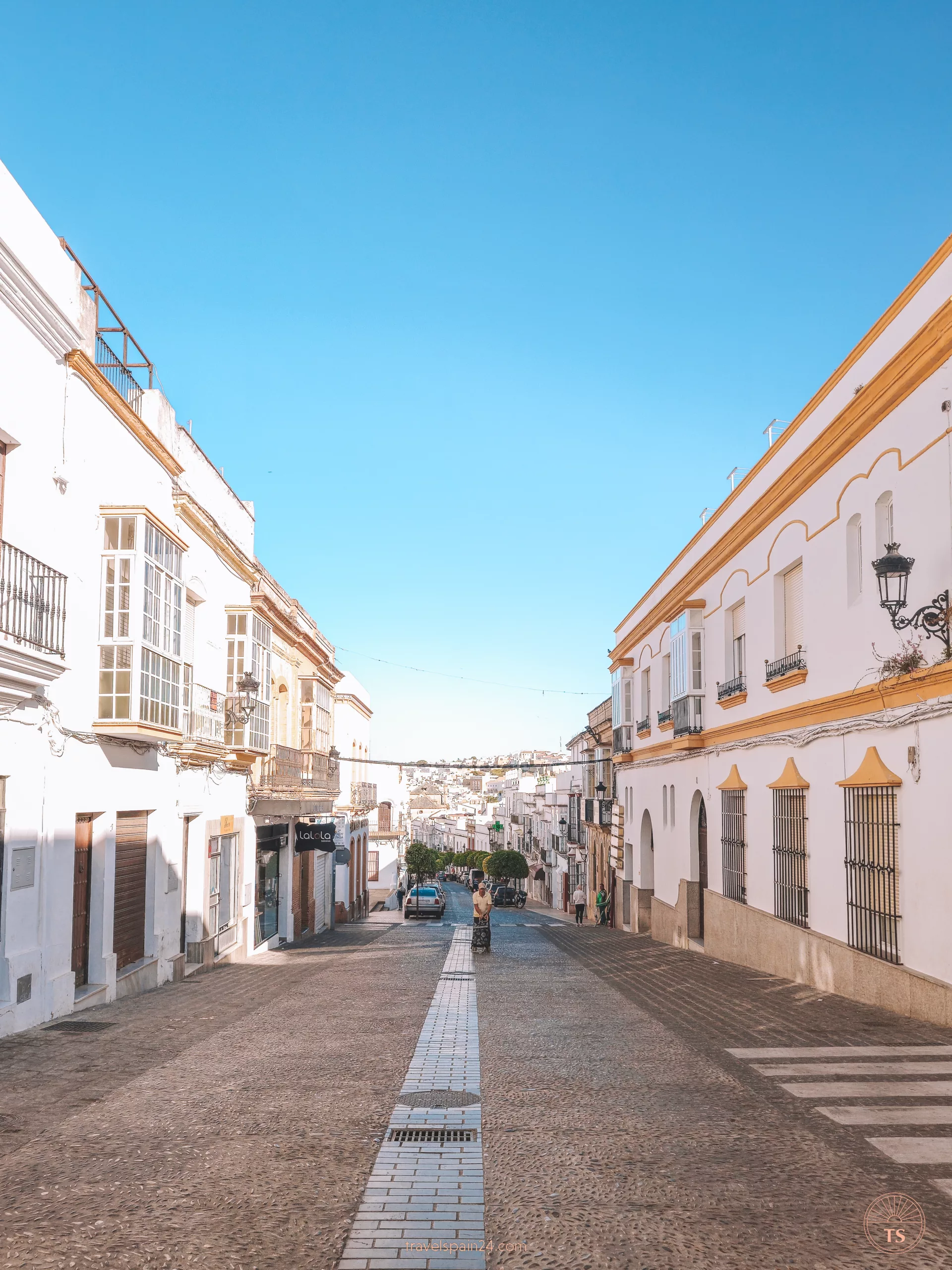
A great parking option is found here if you’re traveling by motorhome or car. That’s where we parked, and there’s plenty of space and shade. From there, you can head toward the center by following signs for Calle Corredera, where you’ll find the Monumento a la Semana Santa.
Monumento a la Semana Santa
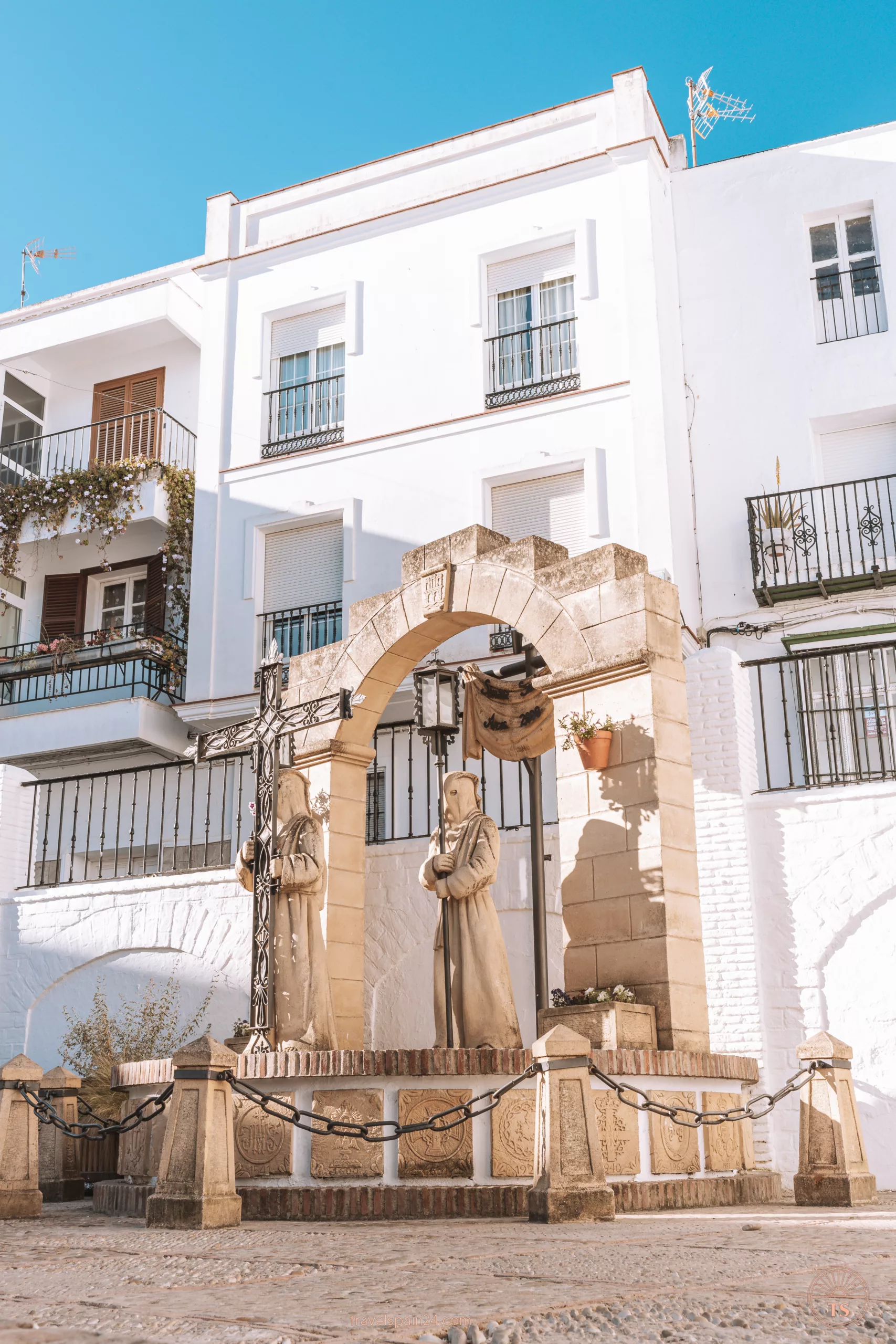
The Monumento a la Semana Santa was created in 2002 and serves as a meaningful tribute to the annual Holy Week processions. The impressive sculpture shows how much these events matter to the locals.
Iglesia de San Juan de Dios
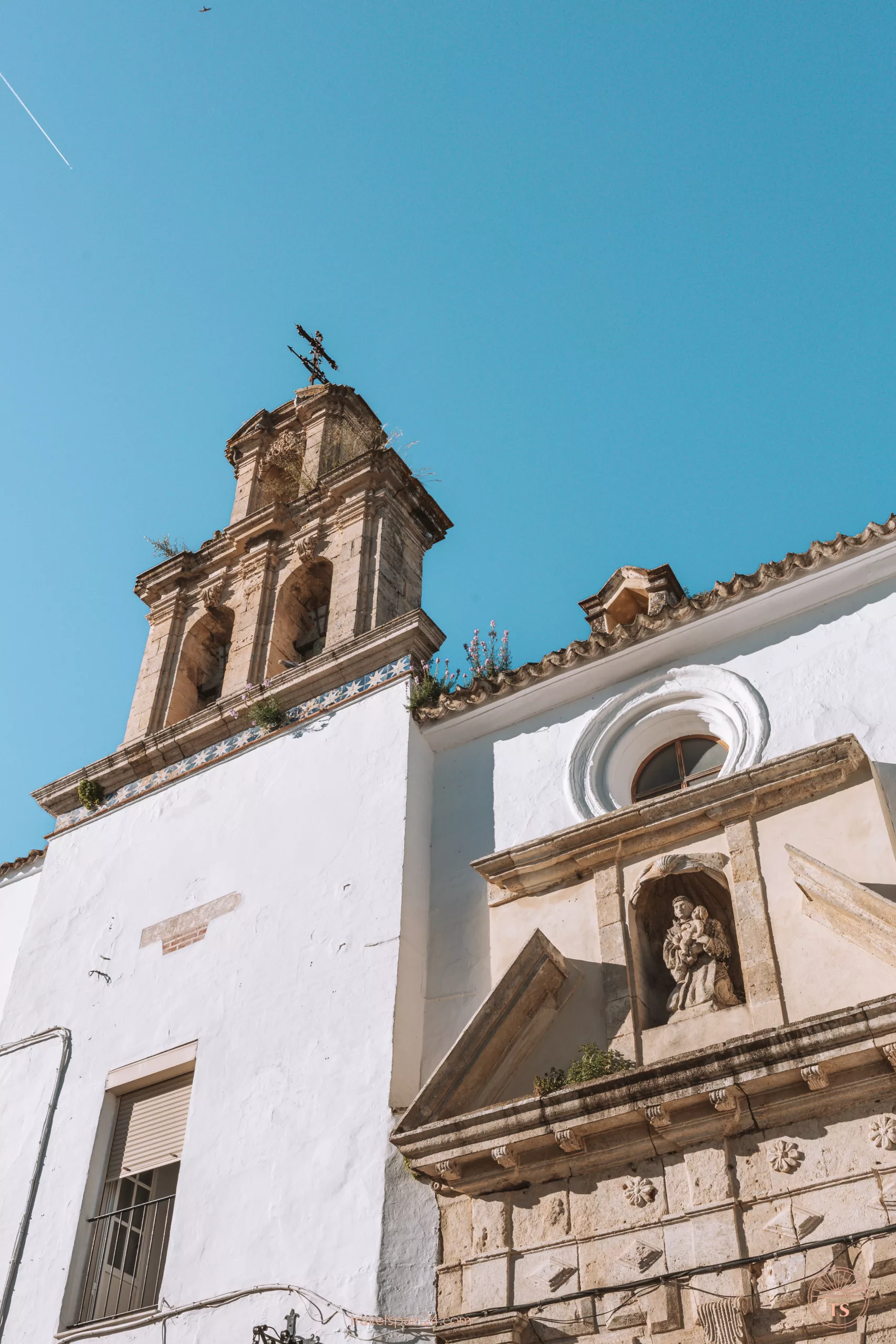
Continue walking uphill along the street, and you’ll soon come across the Iglesia de San Juan de Dios on your right side. A church built in the 16th century and once part of a hospital caring for the poor and sick.
Tourism Office
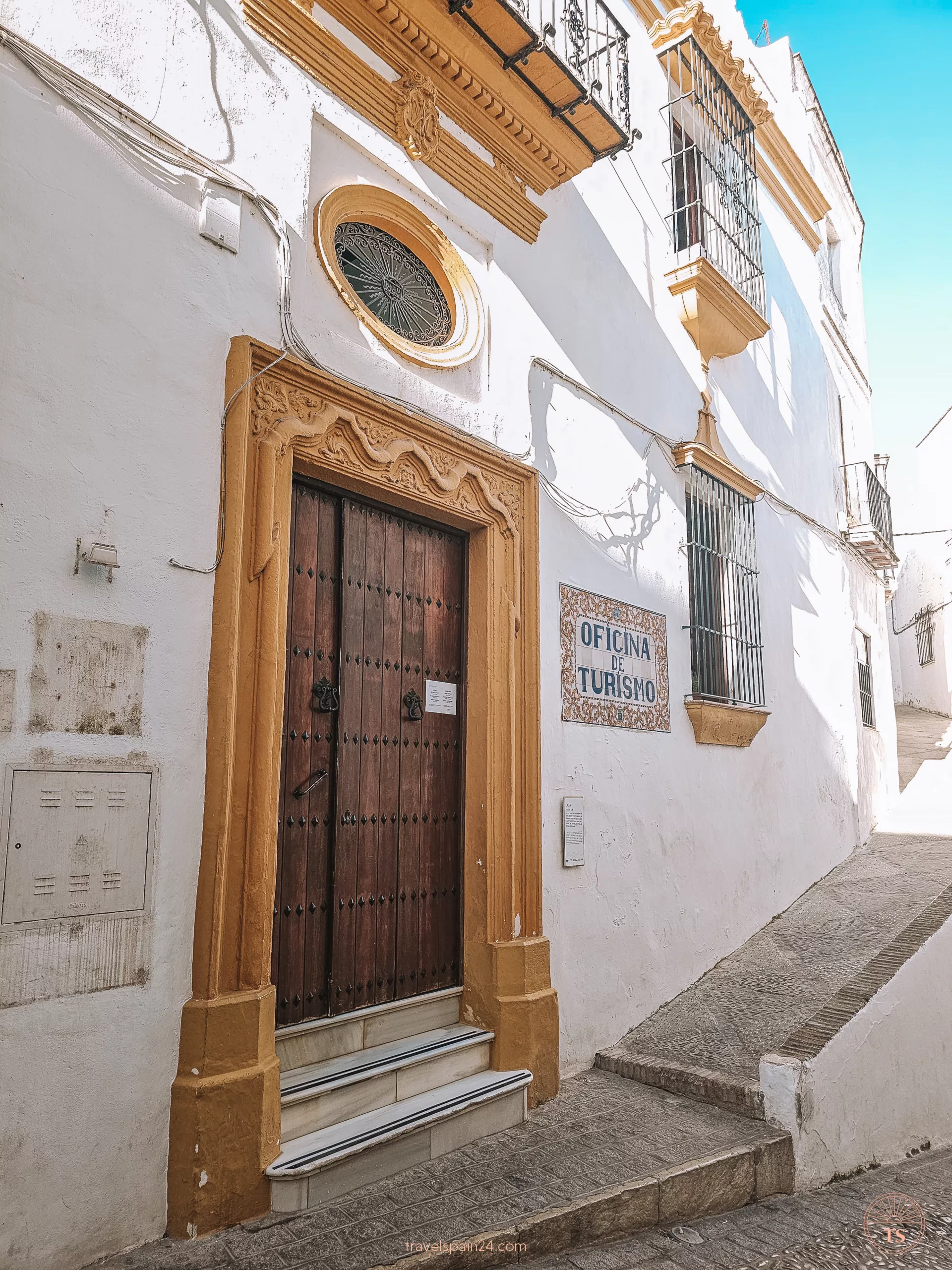
Further up the hill, you’ll find the Turismo office of Arcos de la Frontera. This is a helpful stop to pick up maps and information about other points of interest. The staff can provide recommendations for your day, whether you’re seeking out historical landmarks or just the best spots for local cuisine.
Casa Palacio del Conde del Aguila
Continue along the same street, and you’ll spot the Casa Palacio del Conde del Aguila on your right. This historic 15th-century palace combines Gothic and Mudéjar architectural styles. Its distinctive tower and detailed stone carvings make it a standout landmark worth stopping by.
Basilica Menor de Santa María de la Asunción
Keep walking further, and you’ll reach the Basilica Menor de Santa María de la Asunción. It’s the main church in Arcos de la Frontera, with beautiful Gothic and Renaissance architecture. Located in Plaza del Cabildo, it’s one of the most important landmarks in the village.
Plaza del Cabildo
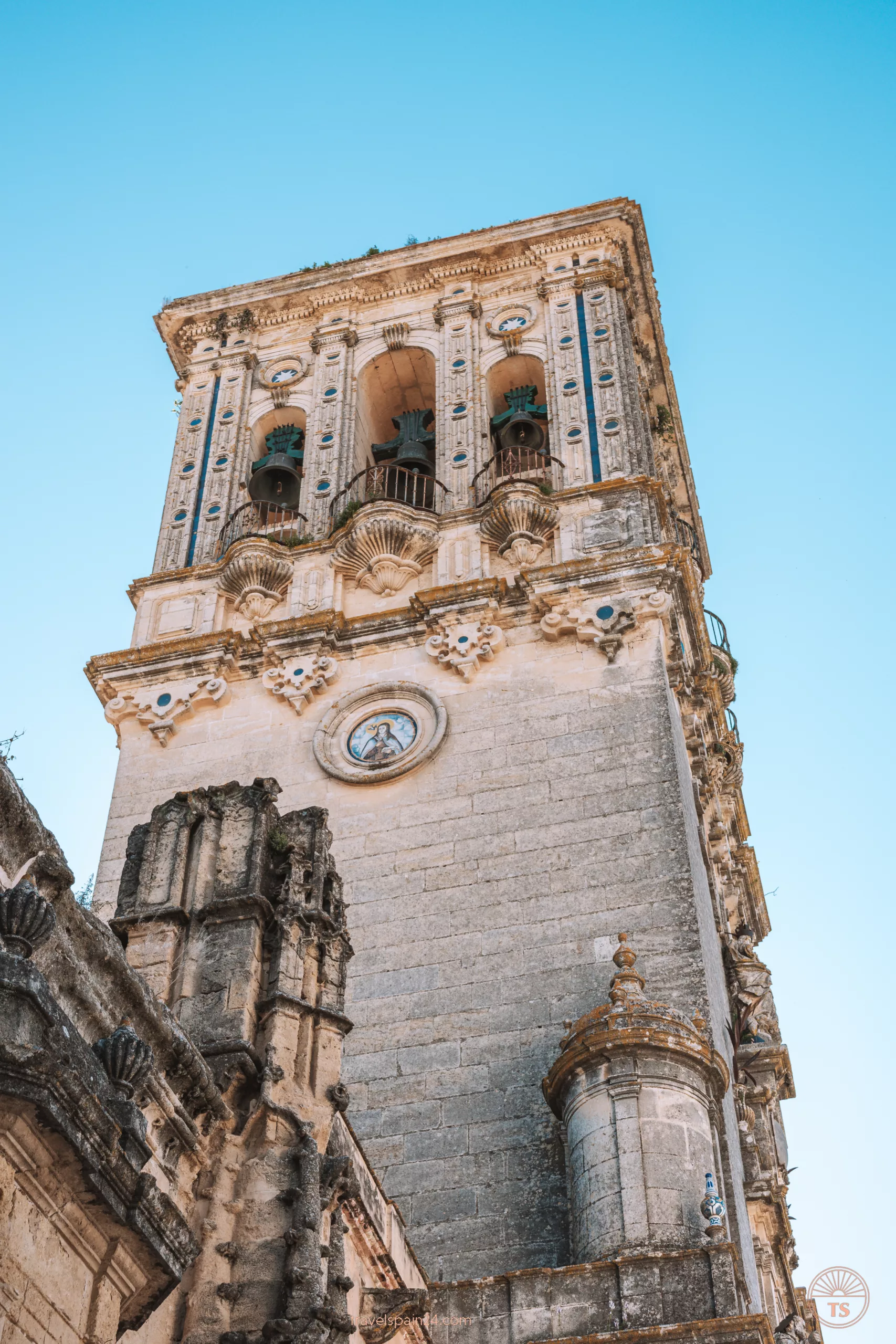
At Plaza del Cabildo, you’ll find a mirador that offers panoramic views of the surrounding area. Sadly for us, it was closed for maintenance, so we couldn’t cross the square. However, it’s usually a fantastic spot to capture some great photos.
Convento de las Mercedarias Descalzas
We continued through the arches on the right side of the basilica and arrived at the Convento de las Mercedarias Descalzas. Here, you can buy delicious sweets made by the nuns.
Just ring the bell and head to the small window inside. There’s a display showing which treats are available, so you can choose ahead of time. It’s a special way to enjoy a tasty souvenir while supporting the convent.
Casa Ramón
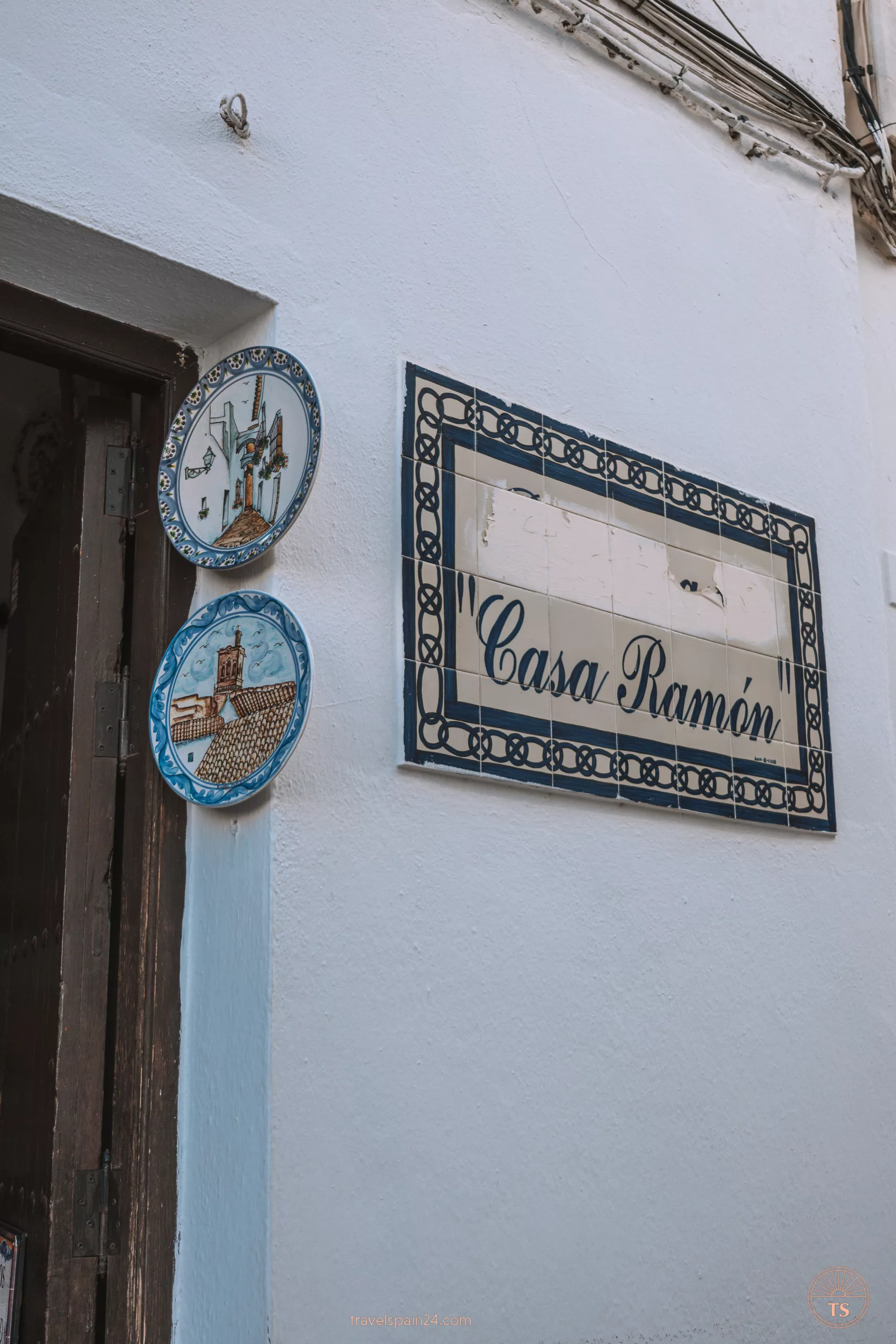
Make sure to stop by the “Casa Ramón” shop for some unique souvenirs. We loved this kind of shop and felt like we wanted to buy everything. The colorful ceramics and pottery are perfect keepsakes, and it’s tough to leave without picking up a few pieces!
Palacio del Mayorazgo
From there, head over to the Palacio del Mayorazgo, a historic mansion that once housed noble families in the 17th century. It’s free to enter, and there’s a small garden in the back.
Unfortunately, when we visited, access to the garden was closed, but it’s still worth checking out for its historic architecture and lovely atmosphere.
Iglesia de San Pedro
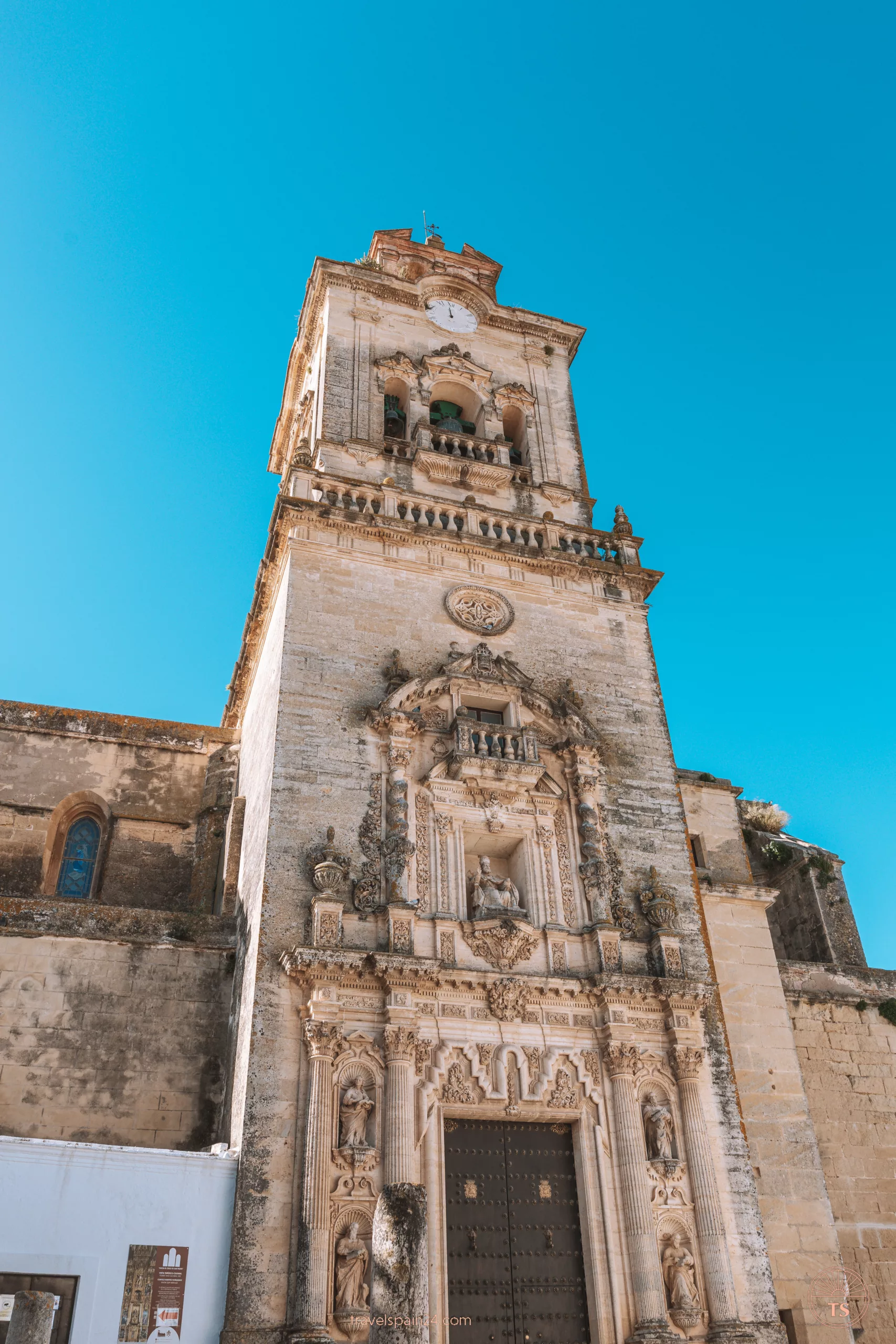
After that, we passed by the Iglesia de San Pedro, which has a striking facade that reflects the rich religious history of Arcos.
Cerámica Andrés Oviedo
Close by, you’ll find the Cerámica Andrés Oviedo shop, which has a broader selection than Casa Ramón. You might even catch an artist at work. We highly recommend stopping by to find something you like, as the range of ceramics and pottery is impressive.
“Bésame en Este Arco” Instagram Arch
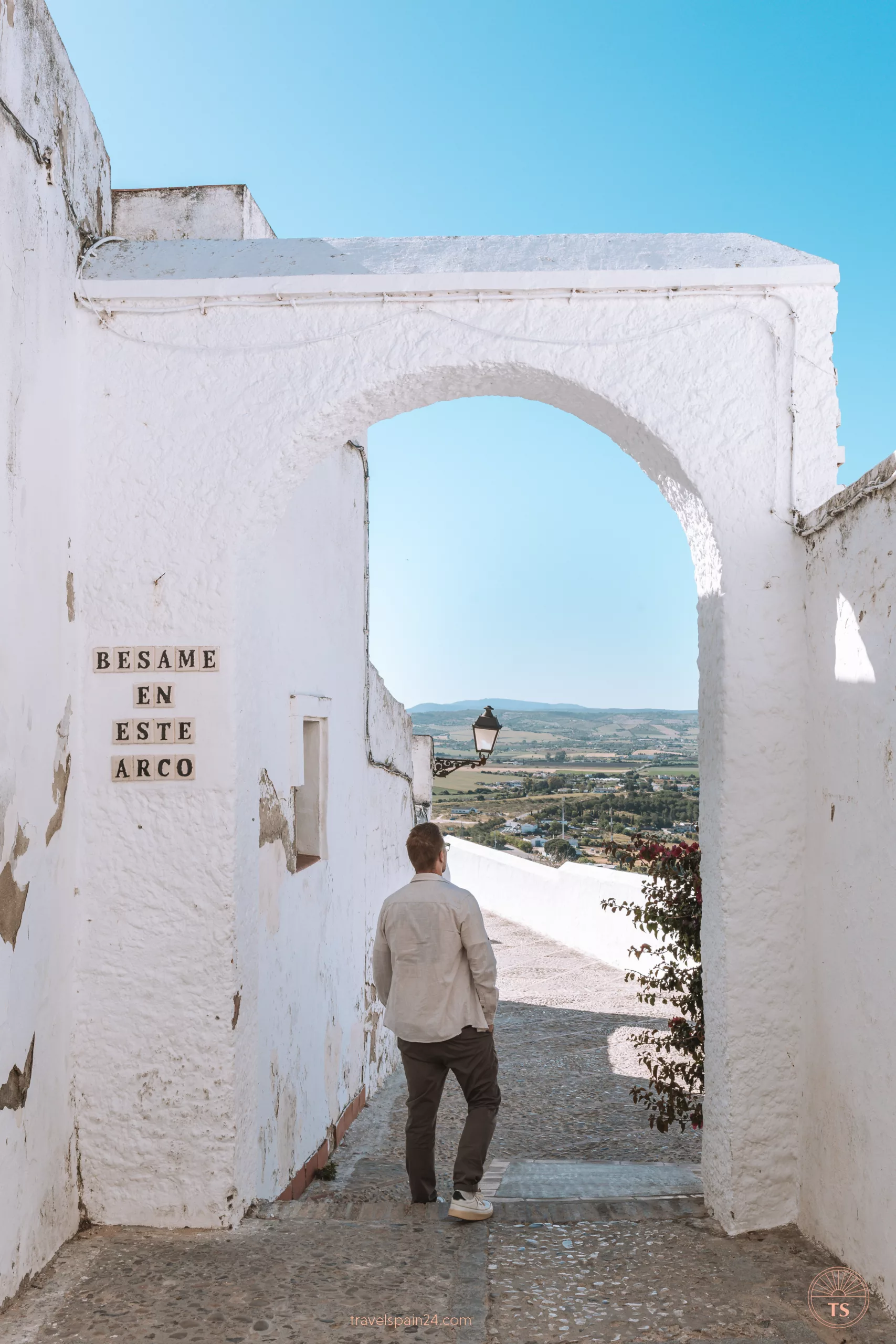
After visiting the shop, head to the famous “Bésame en Este Arco” Instagram arch. It’s a must-see spot in Arcos de la Frontera, which was set up as a romantic spot to capture unforgettable photos with your partner.
We didn’t manage to snap one of ourselves—Timon was too dazzled by the stunning views behind it!
Mirador de Abades
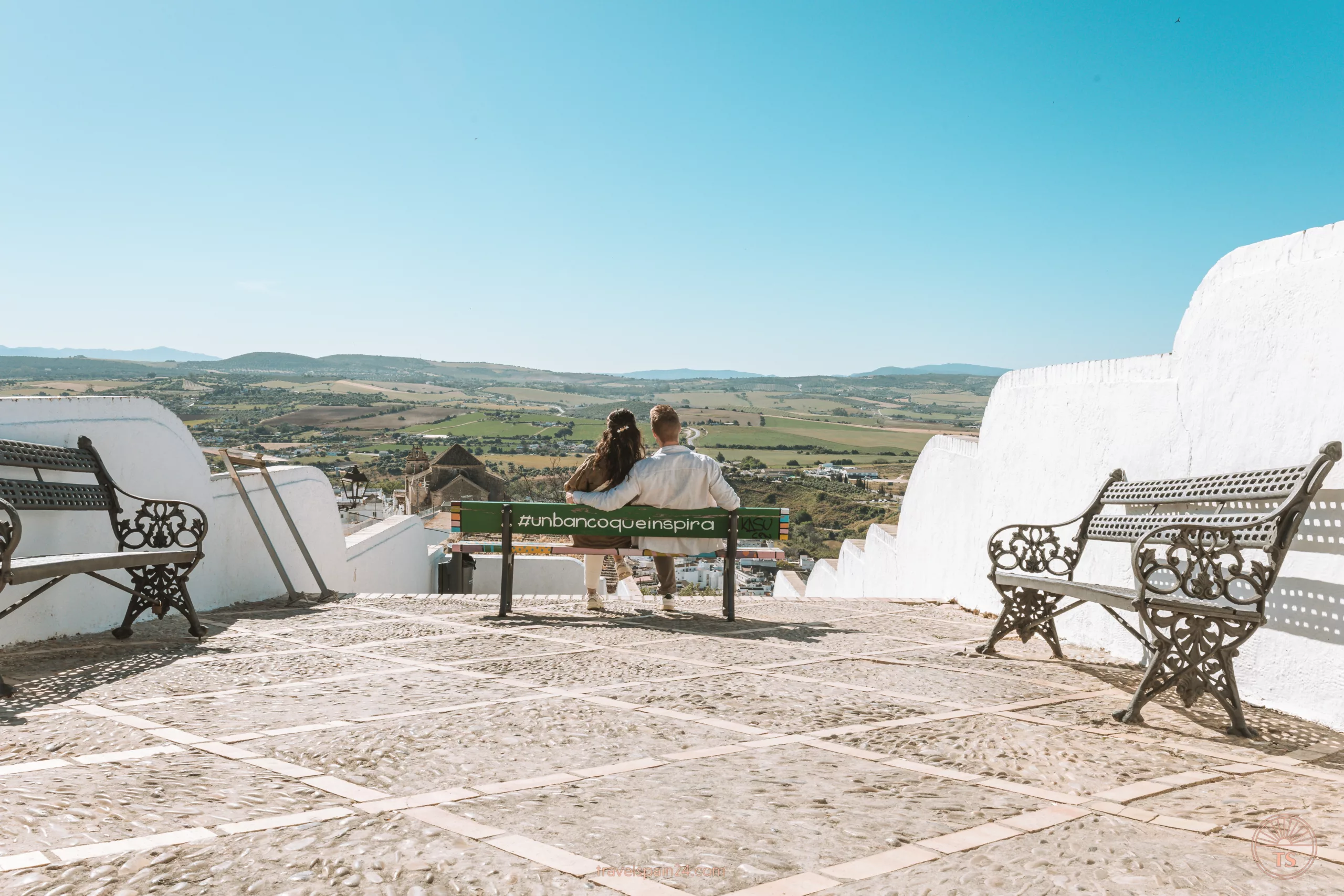
Here, you’ll find the Mirador de Abades, offering beautiful panoramic views. There’s a bench where you can sit, relax, and enjoy the breathtaking landscape. It’s a perfect spot to take a moment and admire the beauty of Arcos de la Frontera.
Iglesia de San Agustín
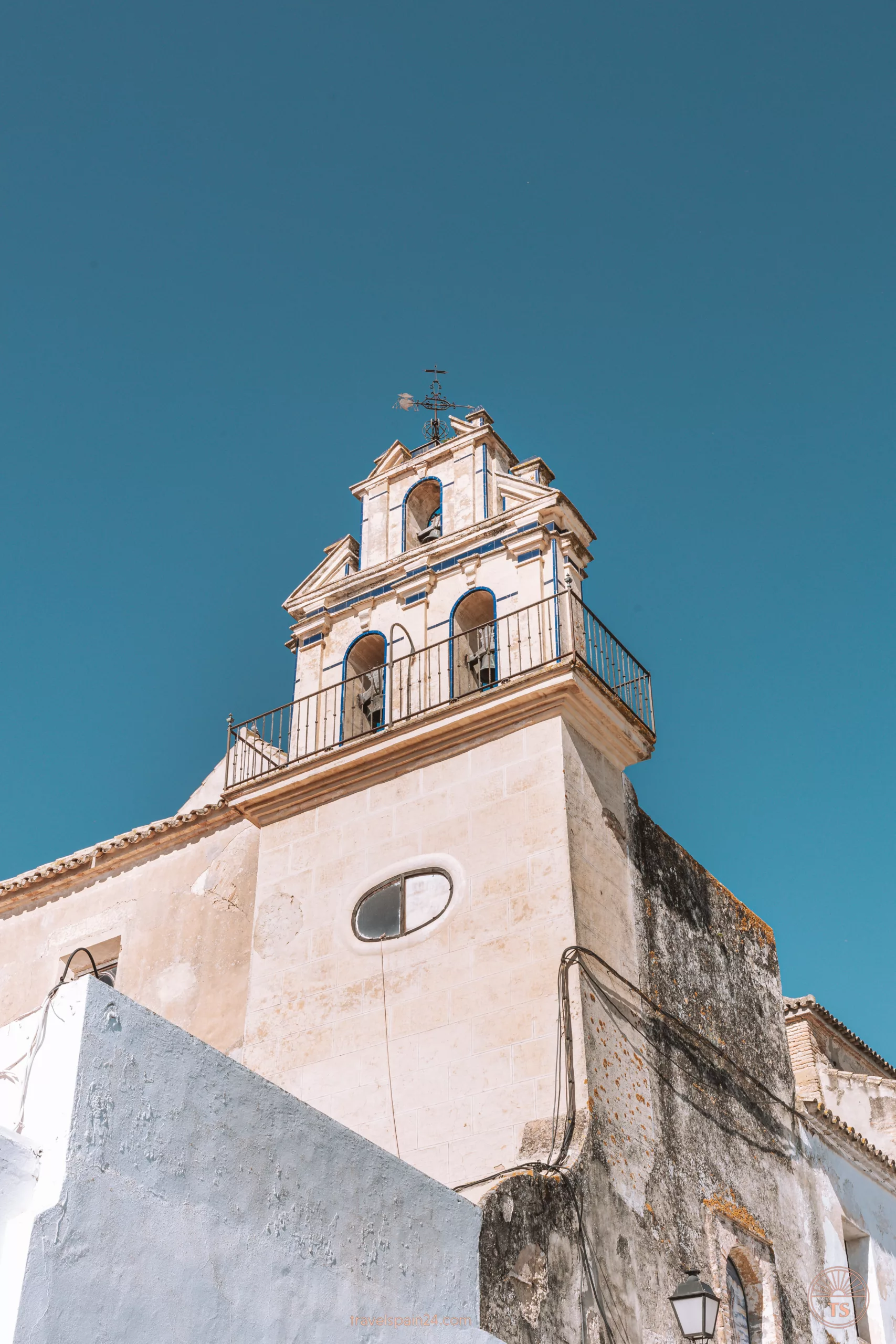
We kept walking down and found the Iglesia de San Agustín, which has a viewpoint nearby. Originally built as a convent in the 16th century, this church offers a different perspective on Arcos de la Frontera’s scenery.
Mirador Peña Vieja
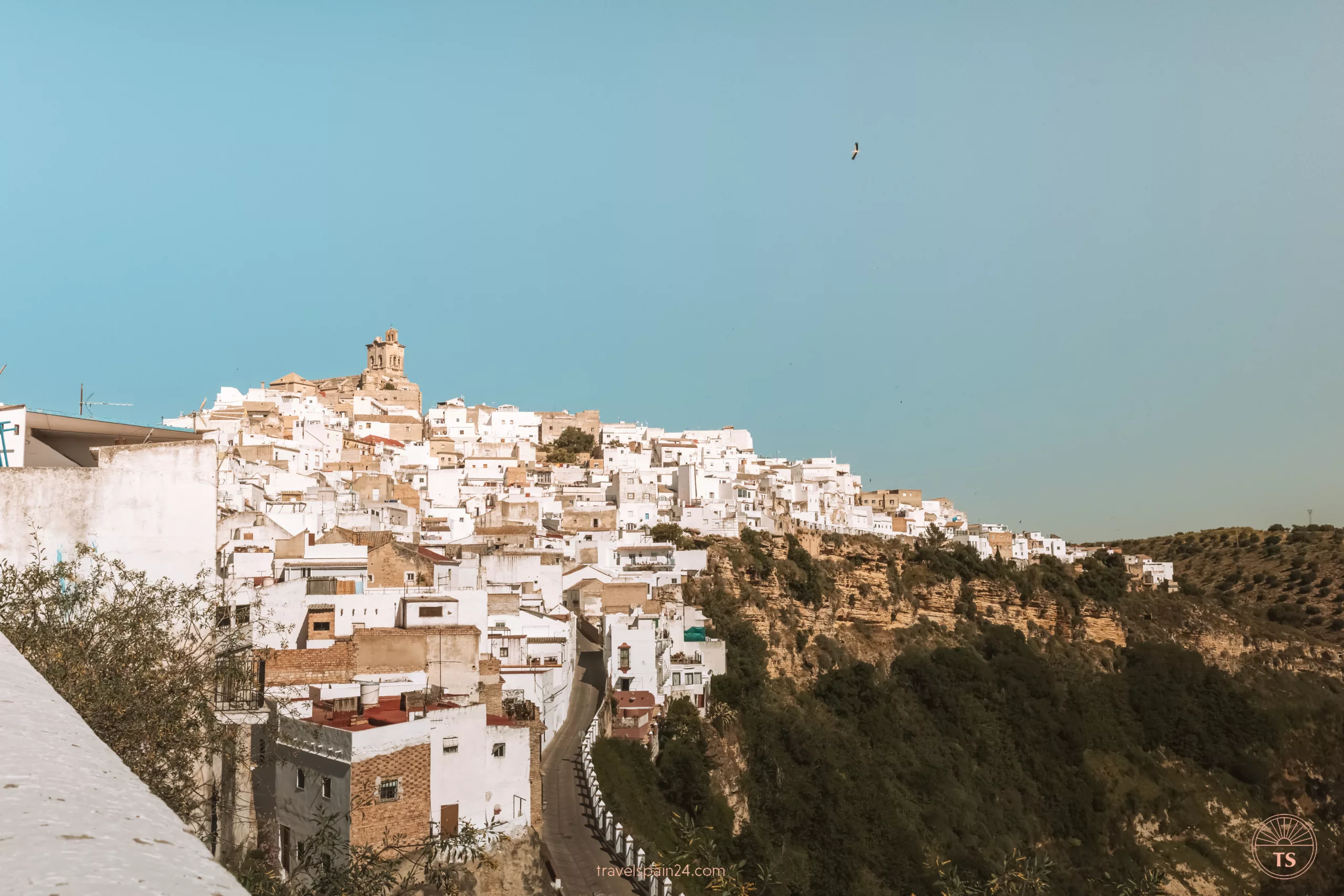
Continue walking down the street, and just before reaching Puerta de Matrera, you’ll find the Mirador Peña Vieja. This viewpoint gives you amazing views of the landscape around Arcos de la Frontera.
Puerta de Matrera
After taking in the views, head over to Puerta de Matrera. This gateway, once part of the old city walls, reveals how the town used to protect itself. It’s a cool place to get a close-up look at some of Arcos’ history.
Casa Palacio Matrera Abajo
Go down the street to find Casa Palacio Matrera Abajo. This historic building offers a look into Arcos de la Frontera’s past and is definitely worth a quick visit.
Iglesia de María Auxiliadora
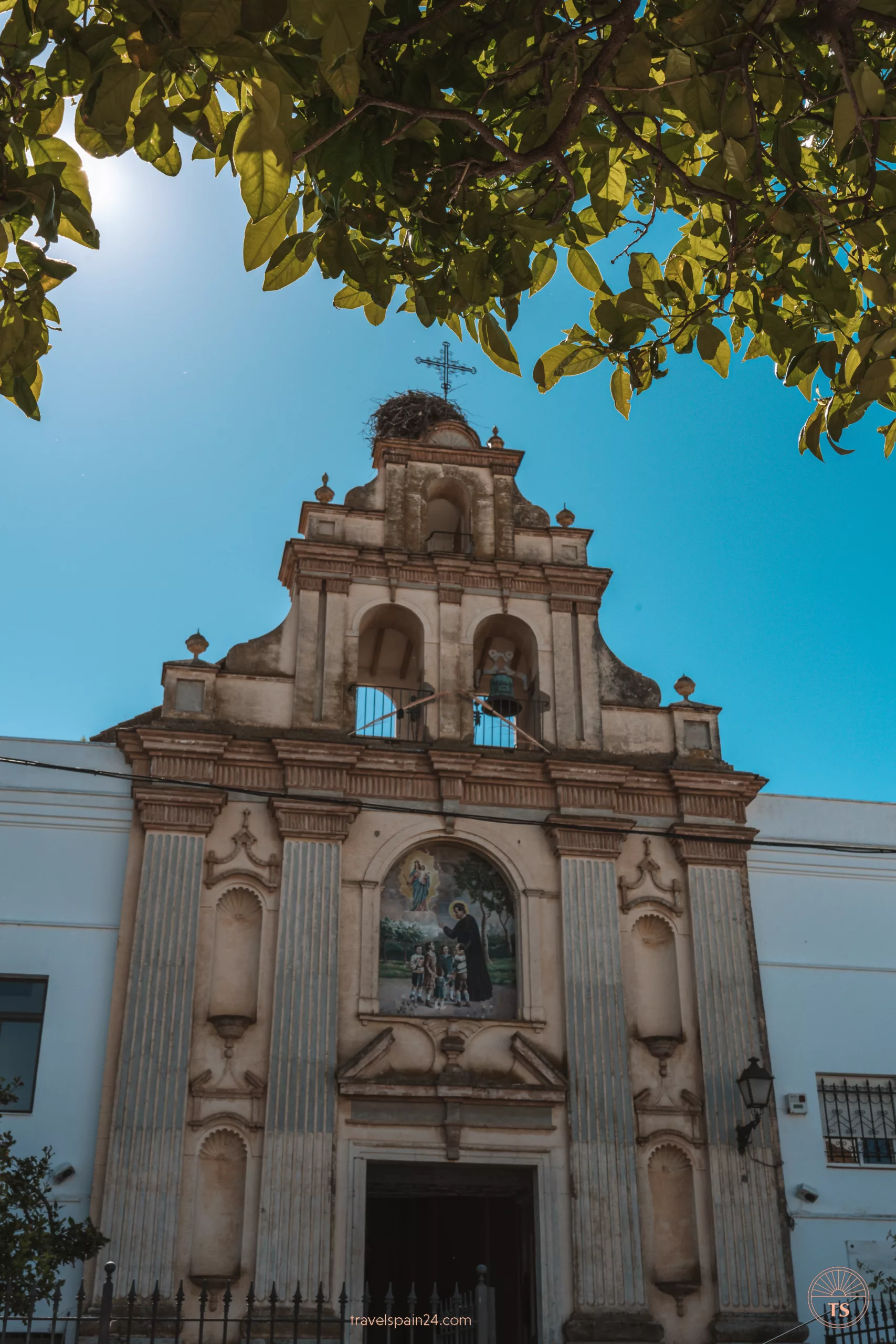
Further down, you’ll come across the Iglesia de María Auxiliadora. This charming church adds another layer to Arcos de la Frontera’s rich religious heritage.
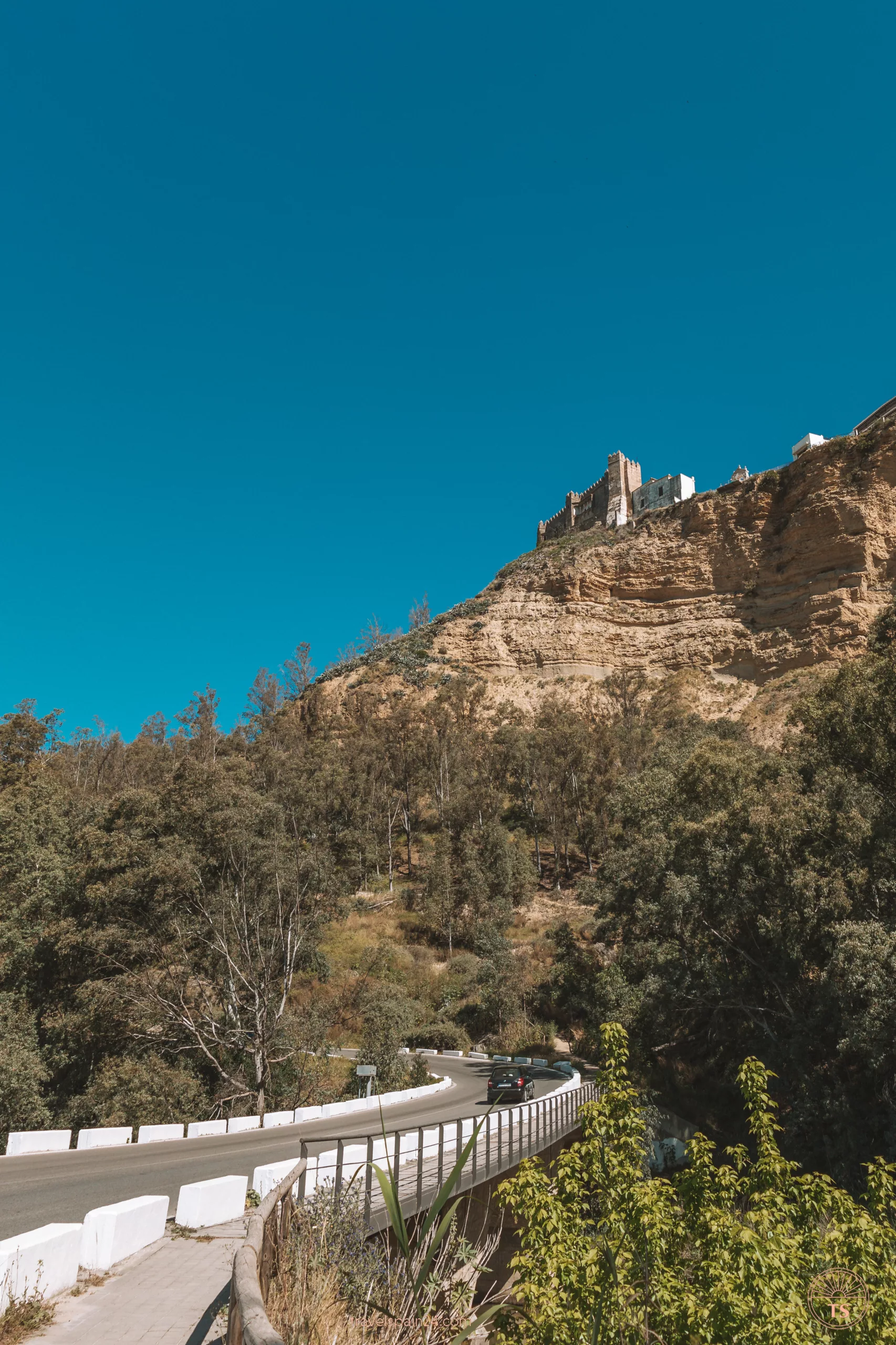
From here, we decided to head back to our motorhome. You can take the same road back or take a small hiking route. Of course, we chose the hike, because we can never resist adding a few extra steps to our day!
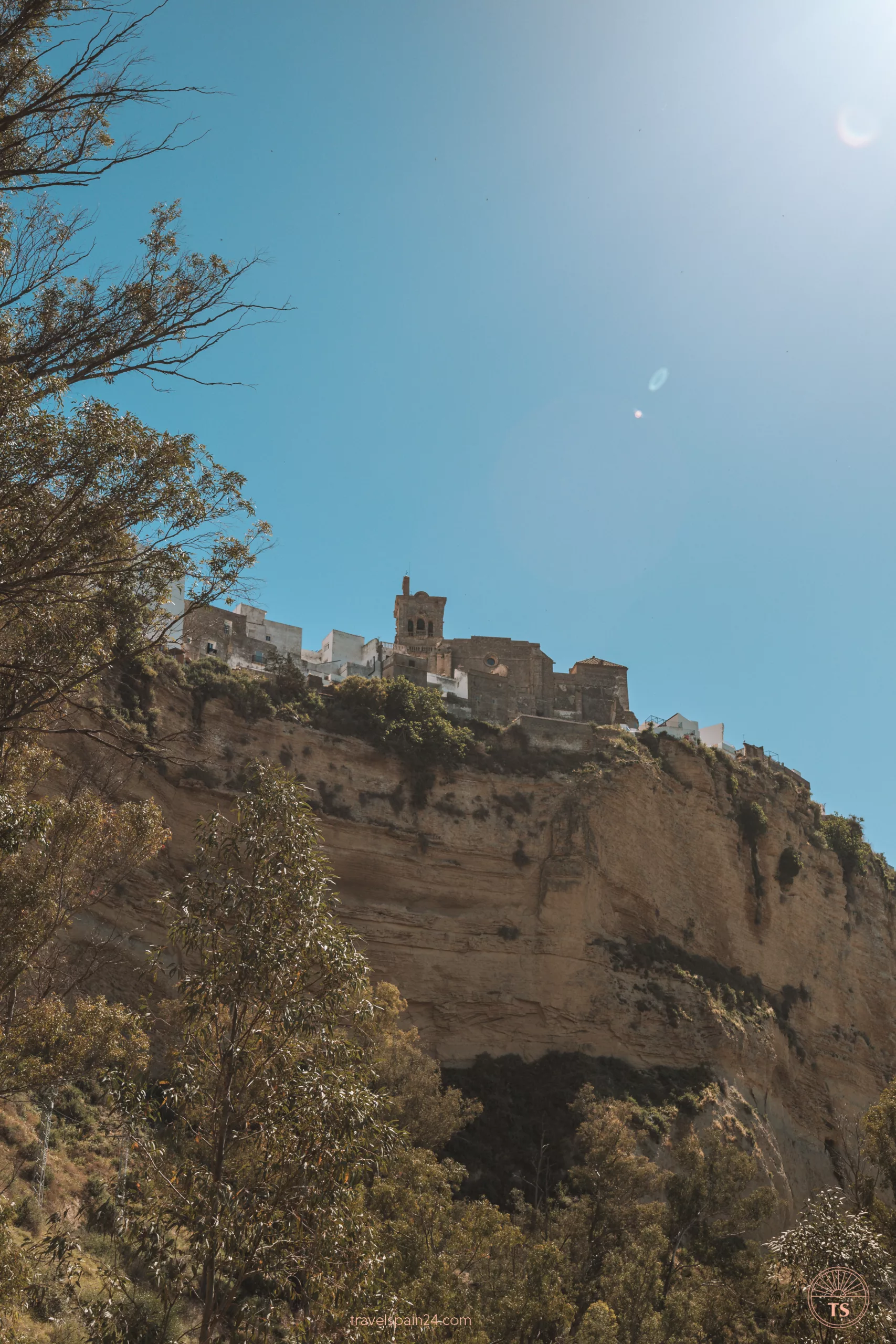
For the hiking route, walk toward the bridge, where you’ll find the Mirador del Puente, another great viewpoint.
From there, head toward Mirador Peña Nueva, then cross the next bridge. Just after crossing, take the dirt path that loops back to the street.
We’ll admit the last part was a bit tough—it was hot and steep—but it was definitely worth it. The cliffside views up close were stunning!
Golosierra Typical Products

Before leaving Arcos, we stopped by Golosierra Typical Products for some local treats. We picked up some traditional cakes and jam. We loved the jam so much that we wished we’d bought a whole year’s supply!
Where to eat in Arcos de la Frontera
When it comes to finding good food in Arcos de la Frontera, check out Aljibe Restaurante for tasty local dishes. Another great option is La Parrilla de Arcos, where you can savor grilled specialties and regional cuisine. Both places offer excellent dining experiences that will give you a real taste of Arcos.
Camping & Outdoor oPTIONS
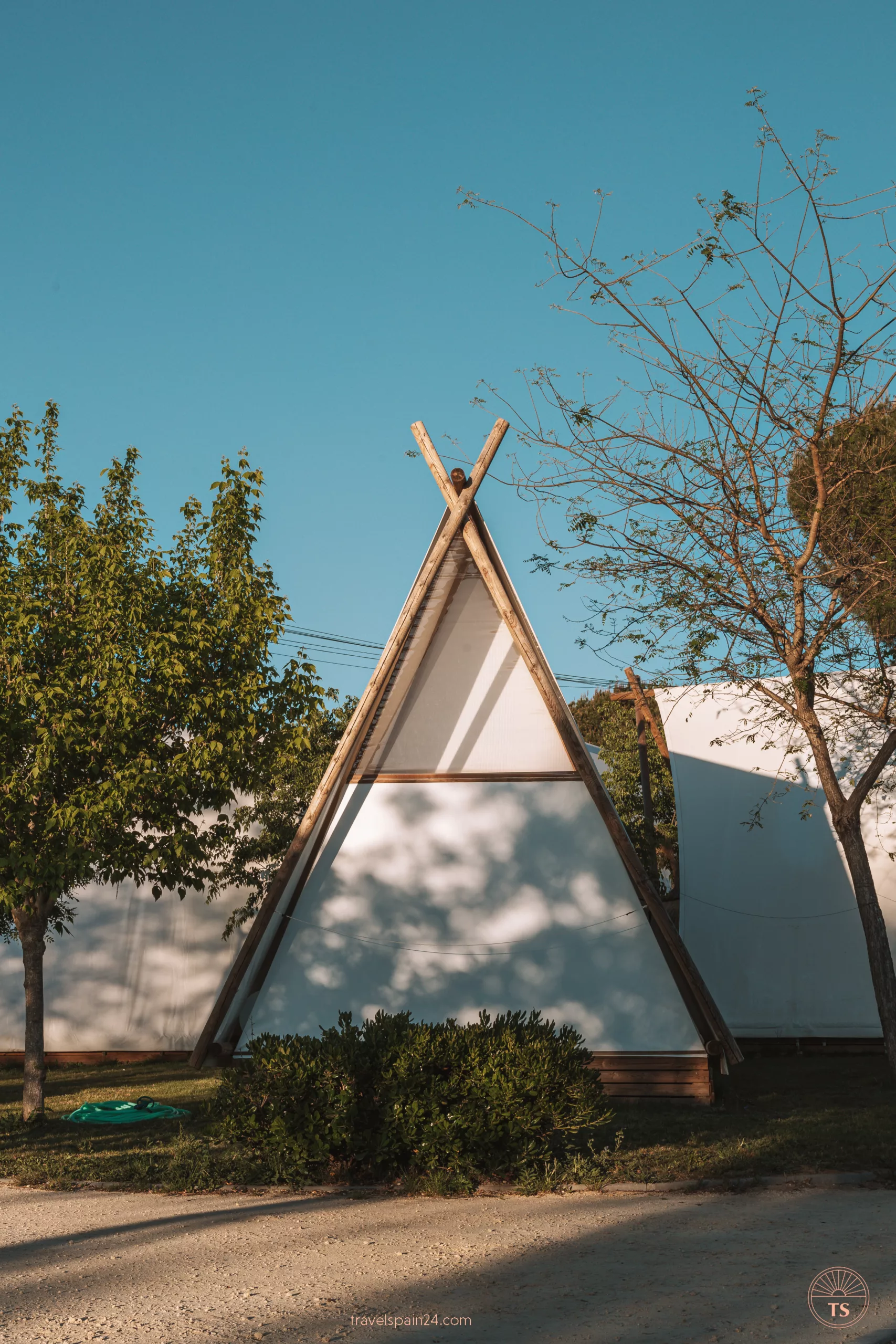
We stayed at Camping Lago de Arcos, which is located right by the lake. The center of Arcos de la Frontera is a 40-minute walk away or a shorter ride by bike.
We walked from the campsite to the Mirador Calle Jara to catch the sunrise—a stunning sight that lit up the sky in shades of orange and pink.
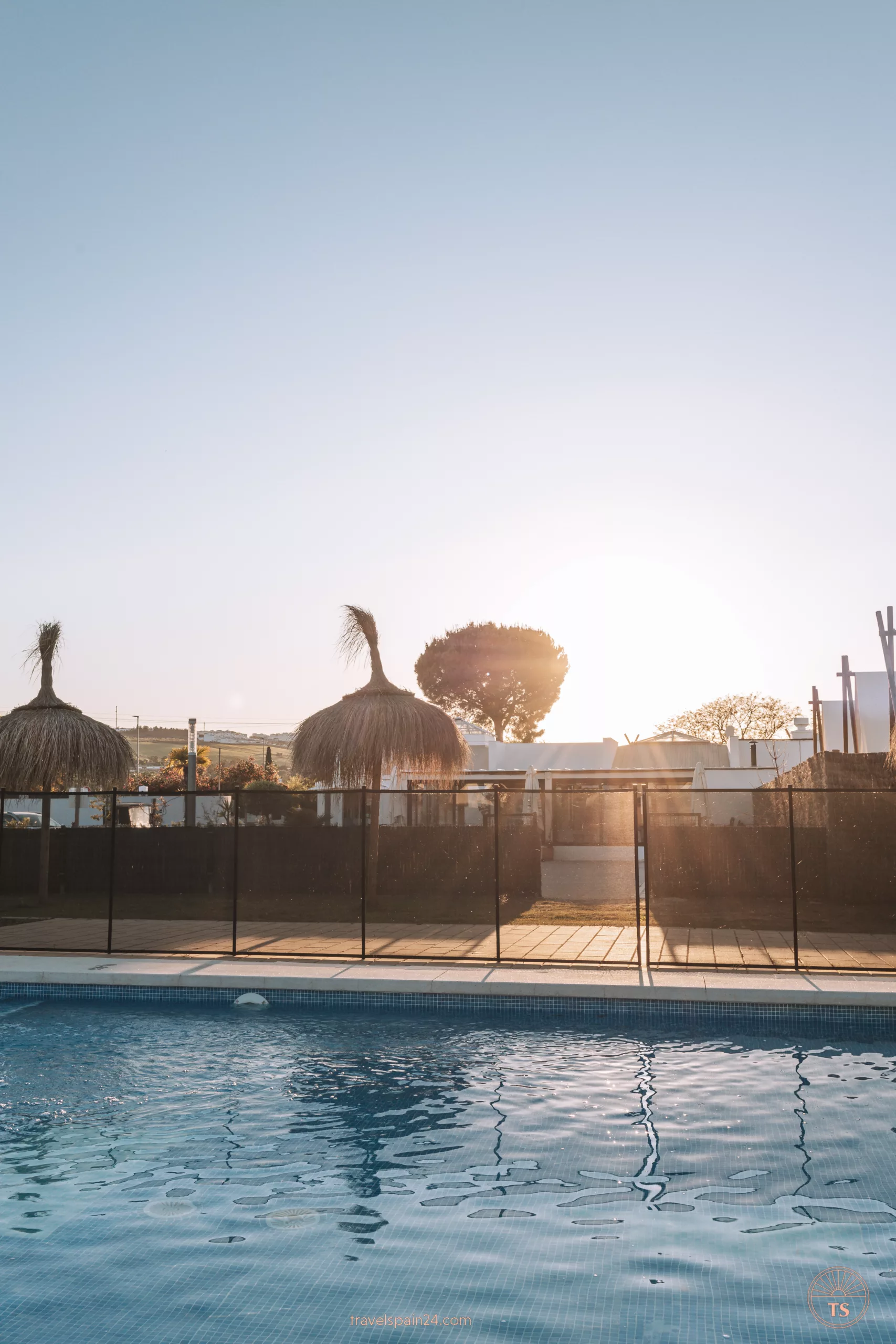
The campsite itself was pretty good. Though our motorhome was parked next to the road, so it could get noisy in the early mornings, overall, it was a decent spot with easy access to both the town and nature.
Tips for visiting Arcos de la Frontera
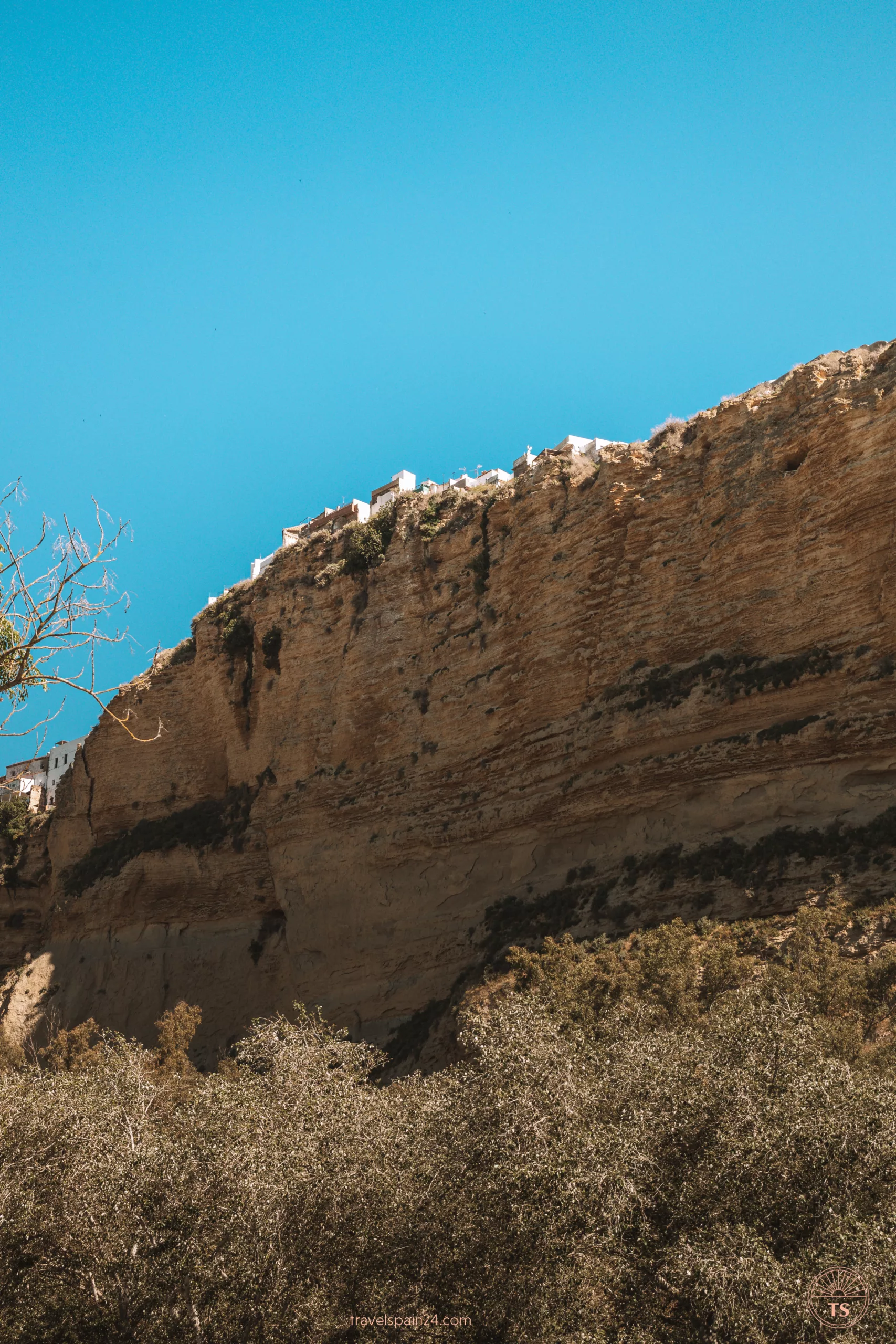
- Best Time to Visit: Spring and fall are ideal, with mild temperatures making it comfortable to explore the winding streets. Summer can get very hot, so be sure to bring plenty of water.
- Parking: It’s best to avoid driving through the old town’s narrow streets. Instead, park outside the center and walk. The Área Arcos De La Frontera parking lot is convenient, offering lots of space for cars and motorhomes.
- Getting Around: The town is best explored on foot, but remember that some streets can be steep. Wear comfortable shoes and take breaks to enjoy the beautiful views.
- Local Treats: Don’t miss the sweets made by the cloistered nuns at Convento de las Mercedarias Descalzas. Ring the bell and choose from a selection of delicious homemade treats.
- Souvenirs: Visit local ceramics shops, such as Exposición de Cerámica Ramón Carrillo and Cerámica Andrés Oviedo, for unique, handcrafted keepsakes.
Arcos de la Frontera really surprised us with its beauty. The cliffside views are incredible, and exploring the streets with their awesome viewpoints made it even more unforgettable. If you’re in the area, it’s definitely worth a visit!


















